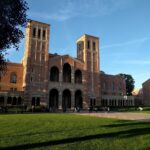Progressive Power Surge
The American public opinion has changed from conservative to progressive, according to a study put out by the Center for American Progress (CAP). The study included a survey of forty statements—twenty characterized as “conservative” and another twenty “progressive.” Participants were to rank how much they agreed with each statement. The range of responses was from zero to ten, with zero being strongly disagree, five neutral, and ten strongly agree. John Halpin, CAP Senior Fellow and co-Director of the Progressive Studies Program at CAP, explained this study at a recent event there. The results were compiled in a table. Halpin focused on the percentage of those that agreed with each question.
Halpin found that “most of the ideas with the strongest consensus in America right now are what might be called ‘Progressive’ ideas… Of the top 15 statements, with at least 60% support, only four are conservative—and they’re not the core part of the conservative ideology. What is interesting—…there still remains residual strength for the conservative worldview…. [T]he core of the conservative perspective enjoy[s] majority support among Americans. So even though…we’re in a period of much stronger consensus around progressive ideas, the conservative worldview still has a lot of latent strength.”
The survey gives a score between zero and four hundred, with zero as absolutely conservative and four hundred as absolutely progressive. Halpin found that the mean of the study is 209.5—right in the middle. He commented, “So what this tells us—in my mind—is that there are many ideas that Americans may have—may believe on their own side—but they’re not fully convinced of… Americans simultaneously are open to a range of ideas on the other side. The conceptualization that you frequently see in some commentary—that we have a far right and a far left pole—is not actually accurate when you look at the American public as a whole. It’s more accurate to say there’s a far center right and a far center left.”
There was also one other thing that Halpin’s study wanted to discover: “[W]e wanted to examine…what we think is a more complex and rich understanding of how people identify themselves. The traditional ideological breakdown of this country is on a three-point scale that you see through most polling: liberal, moderate, [and] conservative. With that breakdown, you get roughly—for a long period of time—about 1/5 of Americans identifying as liberal, and roughly about 40% in moderate and conservative categories, respectively. We decided to ask what we think is a better actual understanding of the varieties of labels that people might apply to themselves; we came up with a five-point measure: liberal, progressive, moderate, conservative and libertarian. And what you see in this graph here is that, when you ask this five-point scale, you get a different picture…of self-identification of ideology. Fifteen percent of the country identifies as liberal, sixteen percent progressive, twenty-nine percent moderate, thirty-four percent conservative, and two percent libertarian.”
What does this mean for conservatives and liberals alike? Halpin’s report, written with Karl Agne, claims, “Overall, these patterns suggest that the most significant divides in American politics over the next few years may not be based solely on ideological or partisan differences, but between two competing and often divergent worldviews of a larger proportion of non-college citizens and a smaller but more powerful elite base.”
“To better understand how ideology shapes American politics,” Halpin explains in his report, “this study explored American opinion on a variety of foundational principles and overall beliefs about the country. In general, this research finds that many Americans remain optimistic about their chances of achieving the American Dream despite clear economic hardship across the country. It also shows that although Americans place a premium on ‘liberty’ as a basic value, a majority of Americans desire a government that does more to promote the common good rather than one that focuses more on individual liberty. Finally, this study finds that Americans favor a more expansive notion of freedom that includes basic economic opportunity and security measures…over one based on more individual choice and libertarian values.”
Heather Latham is an intern at the American Journalism Center, a training program run by Accuracy in Media and Accuracy in Academia.





